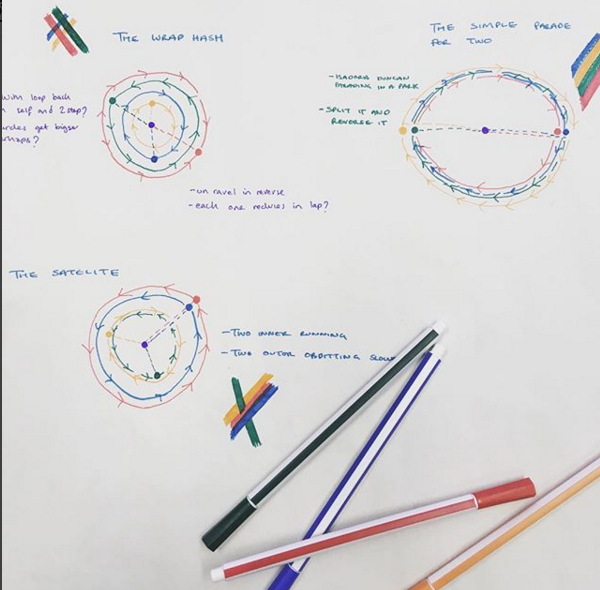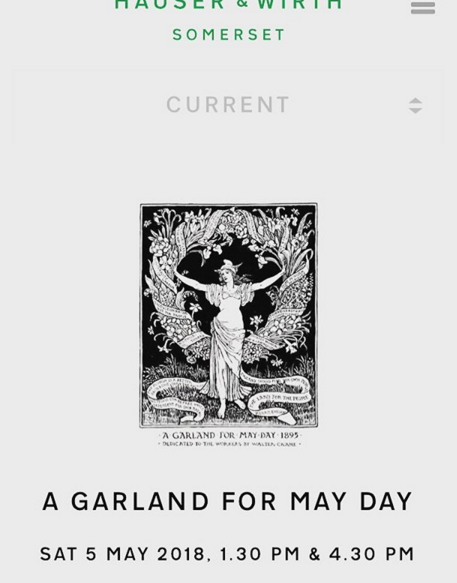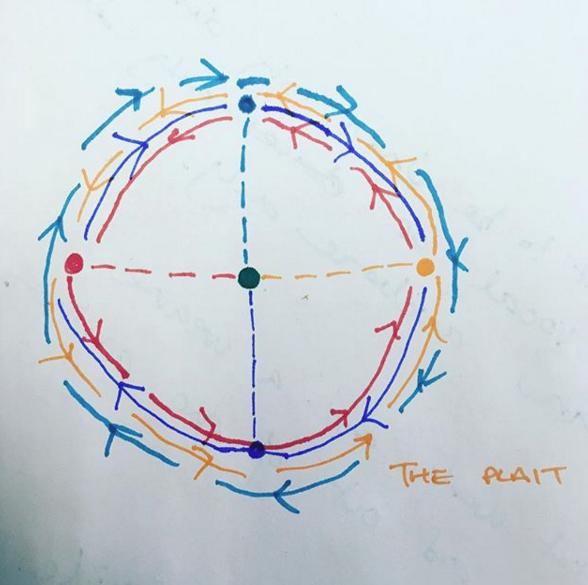The Land We Live in The Land We Left Behind - A Hauser & Wirth Commission, An education in English Folklore and Not Wanting To Dance Around a Big Phallis.
In the spring of this year I was invited to collaborate with Fernando Garcia Dory, produced by Hauser & Wirth Gallery Somerset, to bring together a contemporary and collective may day spring dance to close the exhibition The Land We Live In, The Land We Left Behind.
Brief overview of May Day Fertility dances here: https://www.thoughtco.com/history-of-the-maypole-2561629
Excited by the initial concept of collective dancing but wary at the prospect of initially celebrating something that originates from the concept of young virgins skipping around a big phallis to the delight of the town farmers , (a tradition that was introduced to the UK from Pagan Germanic tradition and then in the Victorian era adopted into the education system as ‘physical education for girls’…) I was keen to explore how we can represent the character of tradition without also continuing to reenforce the notions of gendered hierarchy and patriarchal worship… Simples.
I wanted to look at the subversions of English Folktale that still embodies the culturally symbolic and recognisable whilst recognising change and progression.
Influences and things that helped me get my head around Folk dancing:
There are some women absolutely bossing it in the British Folklore game, namely ‘Boss Morris’, an all female Morris Dancing Side based in Stroud that was introduced to me by one of the projects dancers Mary Eddowes. Definitely changed my mind about Morris Dancing….
Boss Morris can be watched here: http://bossmorris.com/gallery
The meditative act of weaving and collectively creating:
The whole attraction to collective dance for me, is the act of creating and experiencing as a community. By designing patterns, weaves that can appear on the ‘pole’ - in this case, a goat pavillion designed by Fernando and inhabited by Goats, the experience of the dancing, circling and building of collective can be made visible by the woven patterns that are left behind. A map of the bringing together of community, if you like.
Patterns were introduced by the four dancers (Crystal Zilwood, Katherine Hall, Mary Eddowes & Myself) that are then later bound and finished collectively by the joining in of the public.
Joining the dance was the accompaniment of singers - a local family choir singing to the tune of ‘Jack in the Green‘ a song that ridicules the capitalist society and the notion of celebrating ‘stuff’.
Questions?
An introduction for me into the creation of collective dance, this was an interesting lesson on the hows and whats that separate performance and group activity, the introduction of new elements to well known tradition and also witnessing the nature of something that reflects its environment and finding the boundaries of comfort as an artist within this.
How can we continue to maintain elements of collective and traditional Folkloric dances whilst allowing us to leave the archaic behind?
At what point do we let old traditions go and start introducing new ones?
What are the ‘new dances’ of modern tradition?
Do these dances really belong in middle class galleries…….?
A Garland for May as part of The Land We Live In, The Land We Left Behind was performed/happened on May 5th 2018, Hauser & Wirth, Somerset.
Produced by: Lucy MacDonald
Concept, costumes and design: Fernando Garcia Dory
Movement Direction: Linzy Na Nakorn in collaboration with the dancers
Dancers: Katherine Hall, Mary Eddowes, Crystal Zilwood, Linzy Na Nakorn










